Stretches to Correct Violating the Bent Knee Portion of the Definition of Race Walking

If your calves are tight, it is difficult to point your toe and straighten your knee at heel strike. The Traditional Calf stretch is a great place to start and easy to do.
Body Position
Place both hands at shoulder height on a wall or pole in front of your body. Keep your arms fairly straight and your lead leg bent under your body.
Steps
- Place the heel of your rear leg 1½ to 2 feet behind your body.
- Keeping your rear leg fairly straight but not locked in position, place the heel of this foot on the ground (Figure 5-58 & 5-59).
- You should feel a stretch down the outer part of your rear-leg calf muscle. If you don’t, try moving your rear foot back a little farther (remember to place your heel back on the ground after you move your foot back).
- Throughout the stretch, your upper body should remain vertical and straight; do not bend forward.
- Alternate legs when finished.
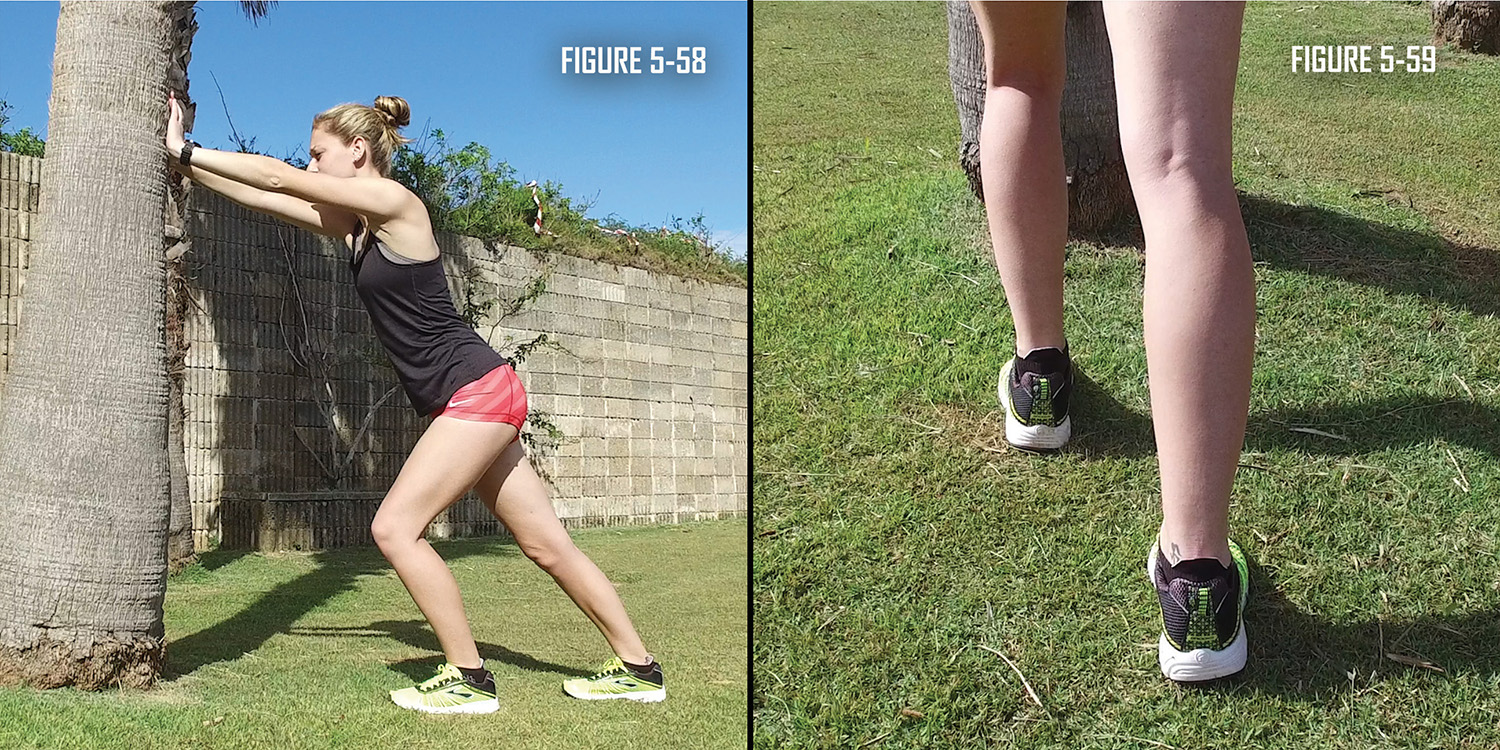

The calf is not a single muscle; it comprises two muscles, both of which need stretching. The previous stretch worked the outer calf muscle. The Bent Knee Calf stretch may not feel effective initially, but it utilizes an excellent position that stretches deep in the inner calf muscle (soleus).
Body Position
You can start this stretch as you finish the Traditional Calf Stretch. (Figure 5-60)
Steps
- Place both hands, shoulder high, on a pole or wall in front of your body.
- Keep your arms fairly straight with one leg slightly bent under your body.
- Place the heel of your rear leg 1 to 1 ½ feet behind your body. Notice that this is about six inches in front of the placement for the Traditional Calf Stretch.
- Keeping your rear leg fairly straight and in a stable position, place the heel of your rear foot on the ground (Figure 5-61).
- Now, keeping your heel planted, bend the rear leg so that your knee drops a few inches closer to the ground.
You should feel a deeper but less pronounced stretch in your calf muscle. While not as pronounced as the other stretches, this one definitely works on the targeted muscle.

If your calves are extremely flexible, you may want a deeper more advanced calf stretch. Because this stretch is relatively aggressive, you may need to build up to it by practicing the Traditional Calf and Bent Knee Calf stretches first. The more flexible your calf muscles are, the better foot plant and roll through you will achieve.
Body Position
Place one foot as close as possible to the edge of a step or curb while maintaining good balance. If possible, use a tree, pole, or even another walker for balance.
Steps
- While keeping your rear leg as straight as possible, lower your heel over the curb as far as it will go comfortably (Figure 5-62). You’ll achieve the best stretch by hanging as close to the edge as possible and lowering your heels as far as they will go.
- After holding the stretch for 20-30 seconds, alternate legs.
- If you still feel tight, repeat this stretch more than once.
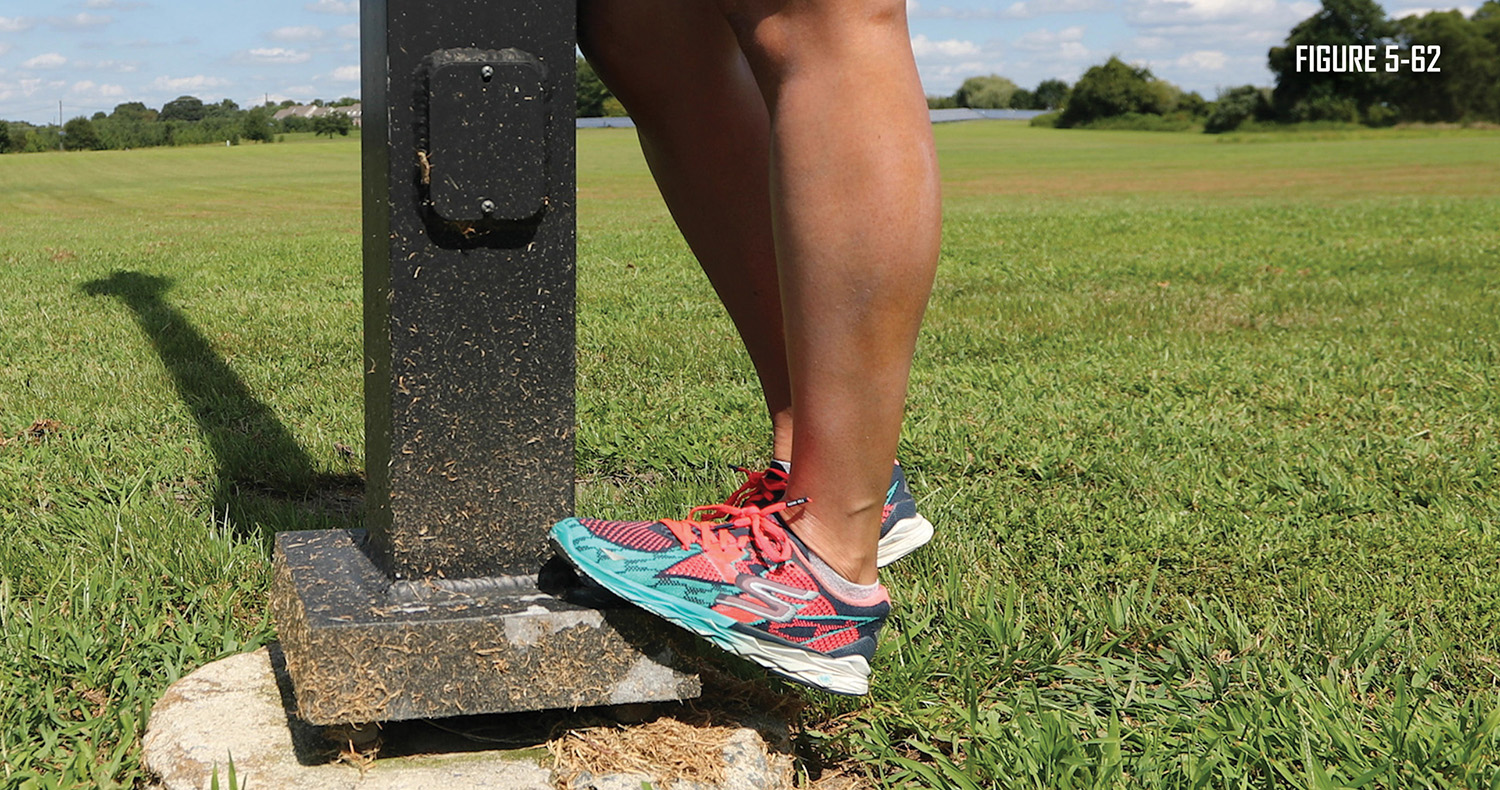

The Intensive Calf stretch is the most aggressive calf stretch included. We use it to stretch the upper areas of the calf that are not reached by less intensive stretching. Definitely perform the other calf stretches before attempting this one.
Body Position
Once again, you will need a wall, pole or tree for support. Begin by standing about an arm’s length away from the pole (The closer to the pole you stand, the more you stretch the calf) with your pelvis forward (not bent at the waist).
Steps
- Place the heel of the first leg close to the bottom of the pole with the toes against it, as if you were trying to step on the pole.
- Now keep your leg and back straight and lean into the wall slowly (Figures 5-63 & 5-64).
- Being careful not to reach the point of pain, lean into your front leg until you feel moderate tension in your upper calf.
- Hold the stretch for 20 to 30 seconds, then alternate legs.
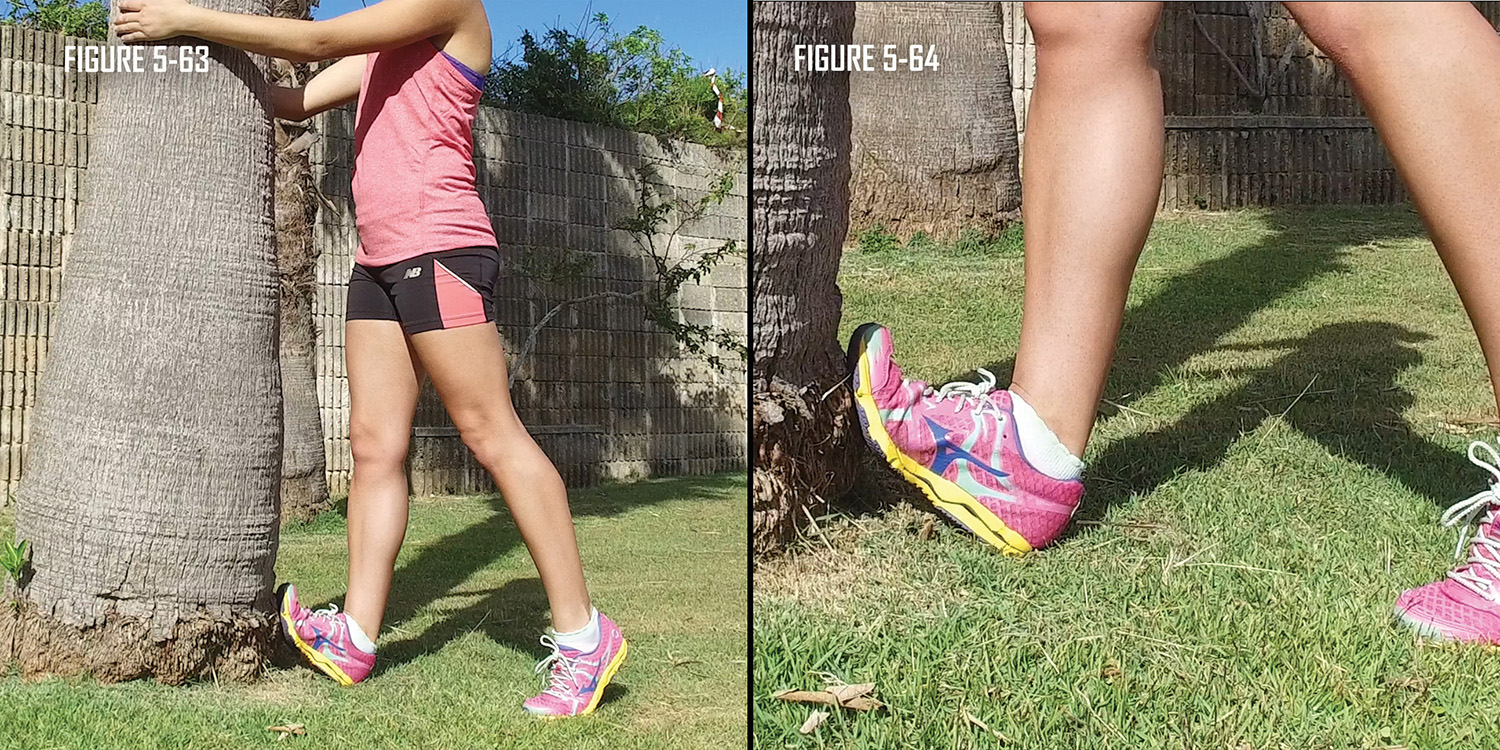
Be sure to use care when first executing this stretch as you can easily overextend your calf if you bounce or move into this position too forcefully. Unlike the first two calf stretches, the advanced stretch concentrates on the muscles of your upper calf. You may want to work up to this position by practicing the other stretches for a few weeks first.

All race walkers will tell you that their shins take a real beating from race walking, and when your shins are sore it becomes difficult to land with the toes pointed up. Therefore, we must treat our shins kindly. If you don’t, you’ll surely develop shin splits and know firsthand how this tiny little muscle can cause big problems. The Standing Shin stretch is just one way to take care of it. However, be careful not to overdo it; otherwise the shin muscle will get back at you on your next walk.
Body Position
Balance yourself near a pole or wall. Put your weight on the supporting leg.
Steps
- Now touch the other foot to the ground, toe first, and pull your rear foot forward just to the point where it is about to move forward.
- Hold it there (Figures 5-65 & 5-66); you should feel the shin muscles elongate and loosen up.
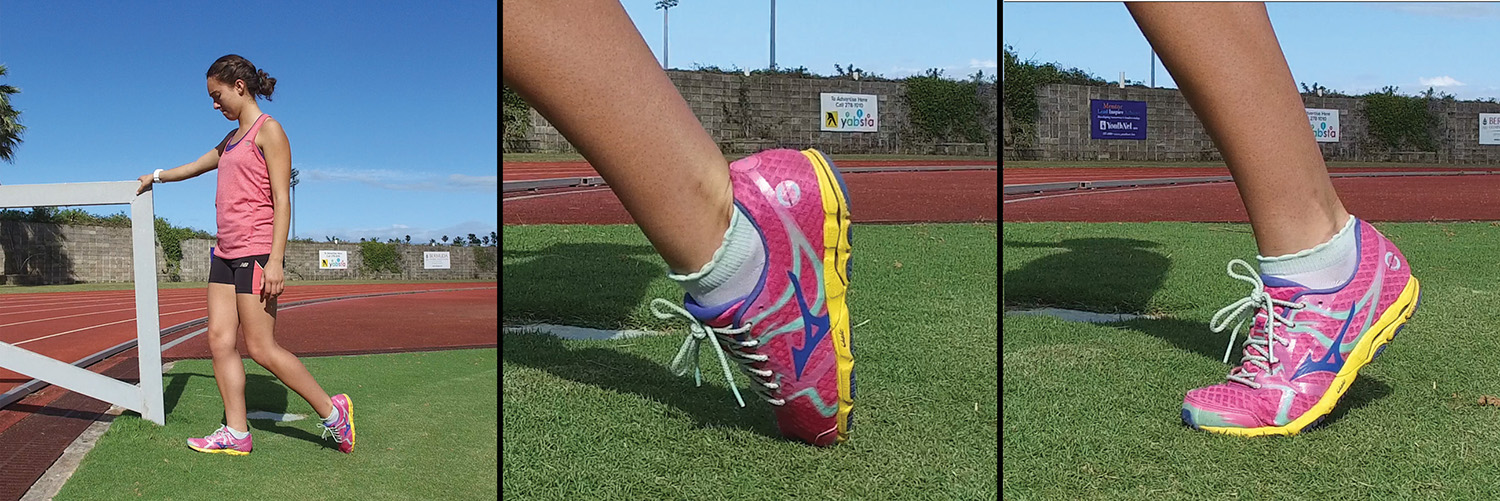
Do not rest on the bottom of the front of your foot as currently shown in Figure 5-67.

The Seated Shin stretch is an effective stretch but has drawbacks. For one thing, you must sit on the ground. If you are in the middle of a race, this is particularly inconvenient. The other problem is that you need grass to perform the stretch, or some very tough knees. Nevertheless, this stretch is very effective in loosening overworked shins and enables you to point your toe and roll through properly.
Body Position
Sit on the grass or soft carpet with your legs folded directly under your thighs.
Steps
- See Figures 5-68 & 5-69; note that the shoelaces touch the ground.
- Use one hand to support your weight and the other to lift your knee.
- This lifting should send a stretch down your shin.
- Hold it 20 to 30 seconds, and then switch legs.
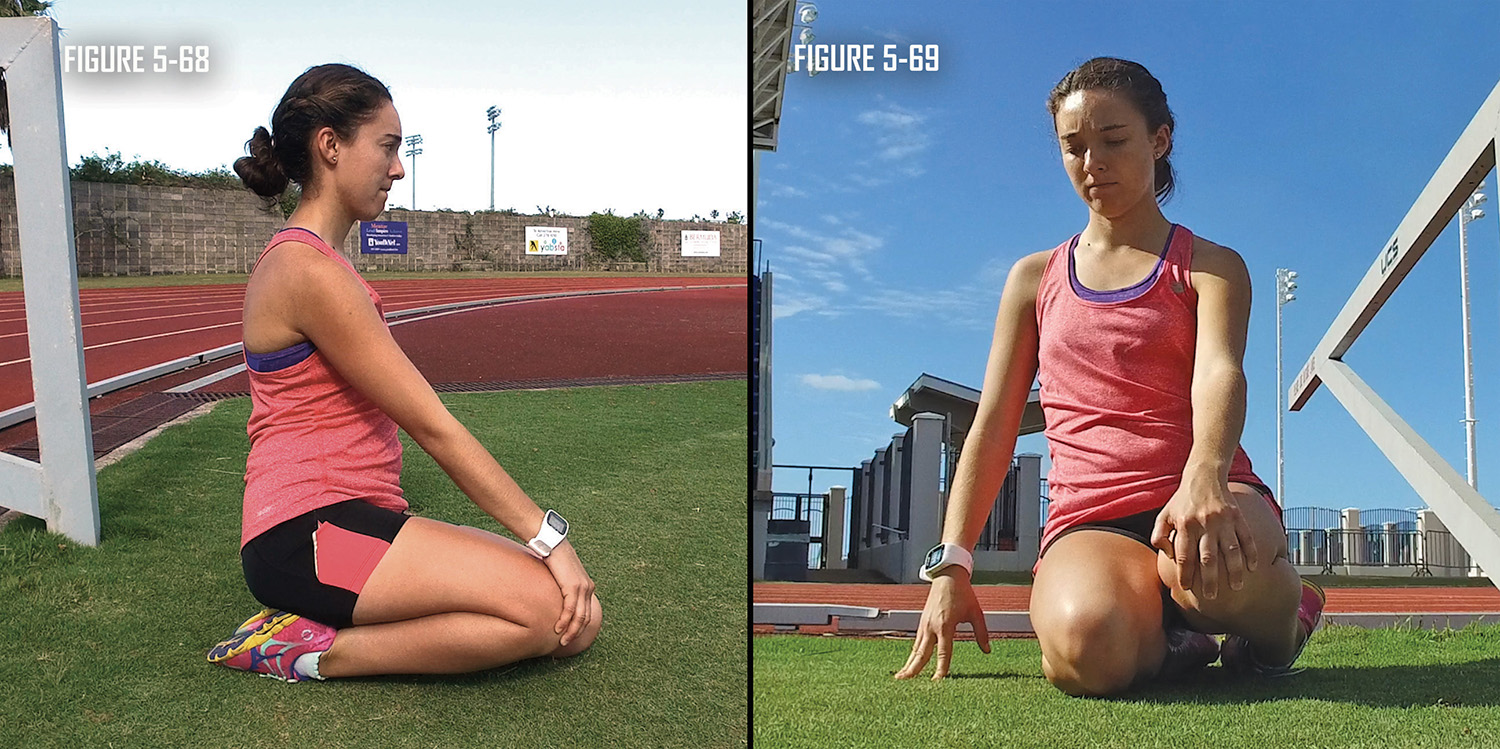

Sometimes a pain creeps up on you out of nowhere, as with pain behind the knee. Race walking sometimes aggravates this area, and it sneaks up so slowly that you don’t actually realize it until it’s too late. With a pain behind the knee, it is very difficult to straighten the knee properly. Avoid this potentially painful problem by adding the Back of the Knee stretch to your cool-down routine.
Body Position
In a seated position, place one leg straight in front of you. Bend the knee of the non-stretching leg, placing the foot on the inside of the opposite thigh, forming a triangle.
Steps
- Keeping a straight back, bend from the hips and lean toward your toe (Figure 5-70).
- If your hamstring flexibility allows, pull your toes towards your body.
- If you lack flexibility in the hamstrings and are not able to reach your toes, use a towel or rope to extend your reach (Figure 5-71) and get cracking on those hamstrings!
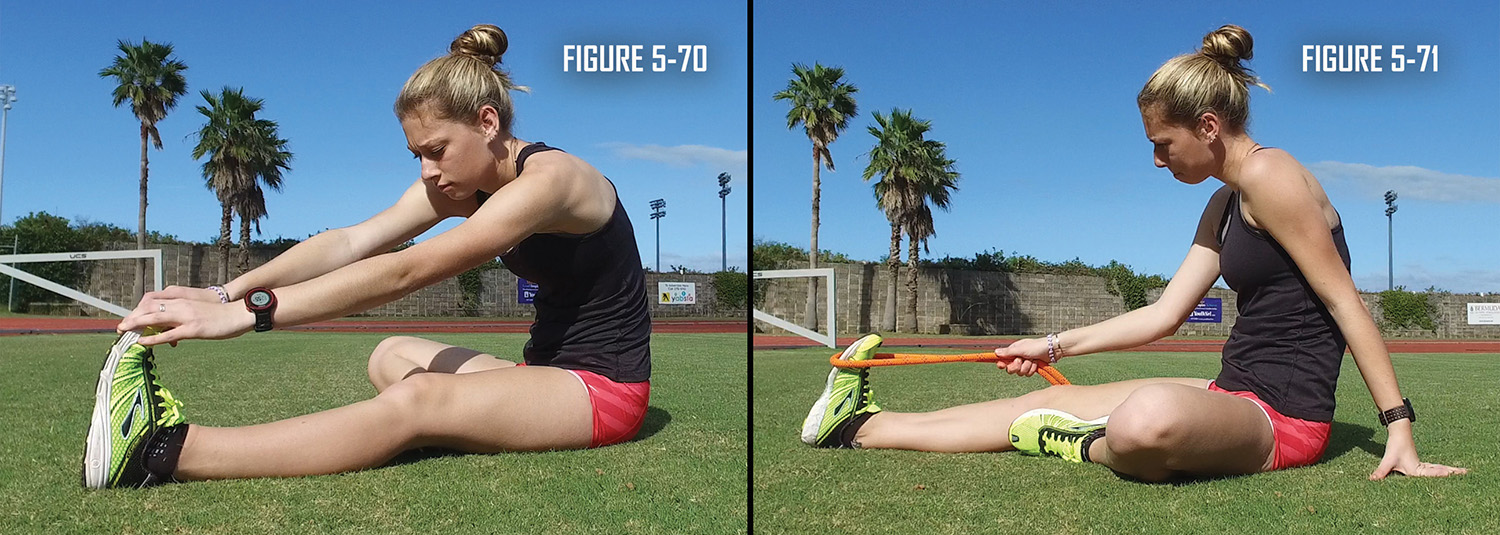

Hamstring flexibility is a key to efficient race walking technique and is especially important for those walkers with bent knee issues. The simplest way to stretch your hamstrings is to perform the traditional hamstring stretch as either a cool down activity or after you’ve properly warmed up.
Body Position
Sit down, placing one leg in front of you.
Steps
- Bend your other leg with the sole of your foot facing toward your straight leg and the knee pointed out.
- Keeping your back straight, lean forward from the hips, reaching towards your toes (Figure 5-72).
- Ideally, you should reach past your toes, but remember not to overstretch or bounce while trying to touch them; just stay within your comfort zone.
- Hold the stretch for 20-30 seconds and repeat 2-3 times with each leg.
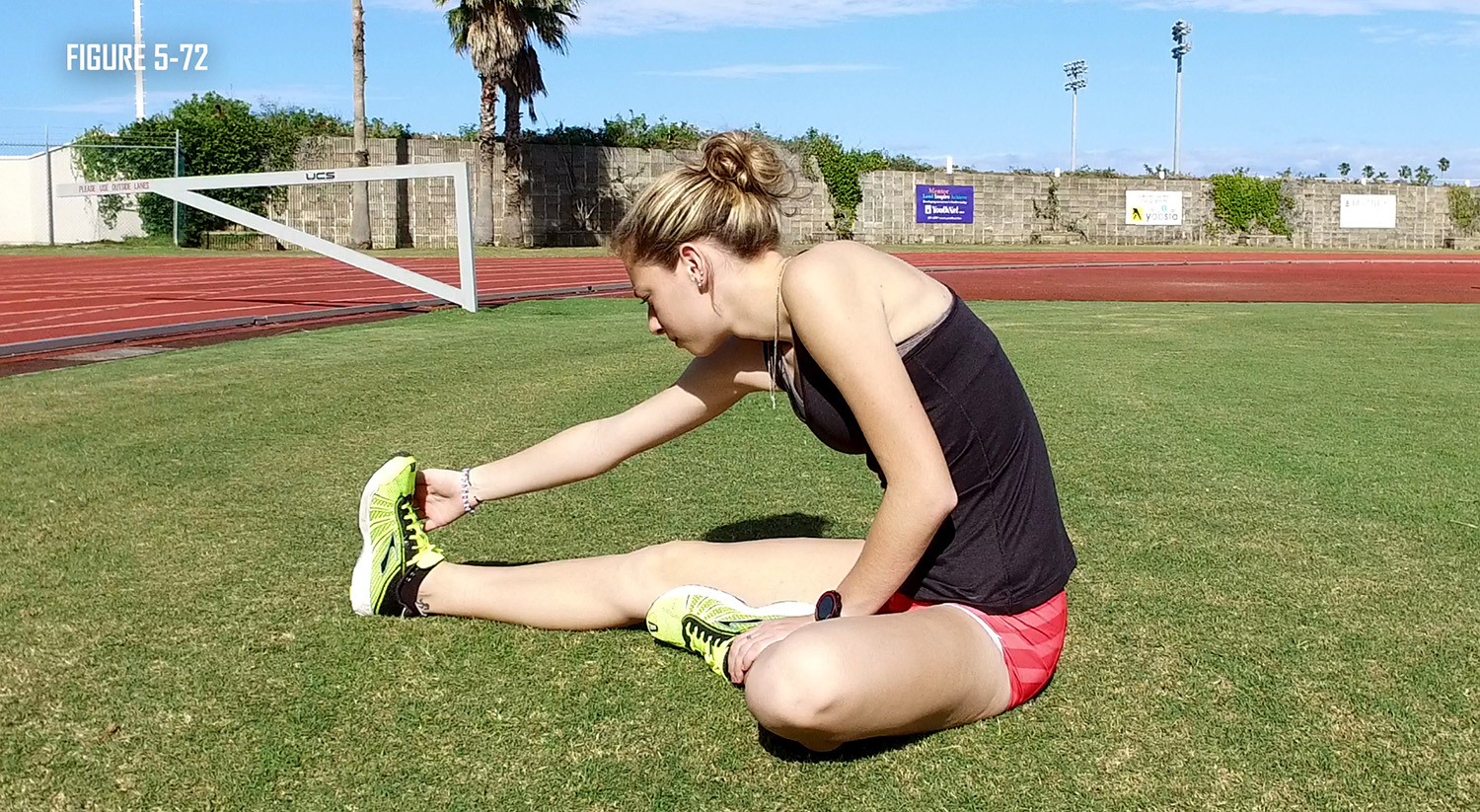

Sometimes getting down on the ground to stretch your hamstring isn’t very convenient. Instead, try stretching your hamstrings standing up using the Leg Up Hamstring stretch.
Body Position
Place your foot on a bench, table, or anything at a comfortable height, while standing far enough back to straighten your leg comfortably.
Steps
- With a straight back, lean forward, taking care not to bend your knee.
- Reach for the toes on your raised foot and hold once you begin to feel the stretch; You may also choose to hold behind your leg (Figure 5-73).
- Hold the stretch for 20-30 seconds and repeat 2-3 times with each leg.
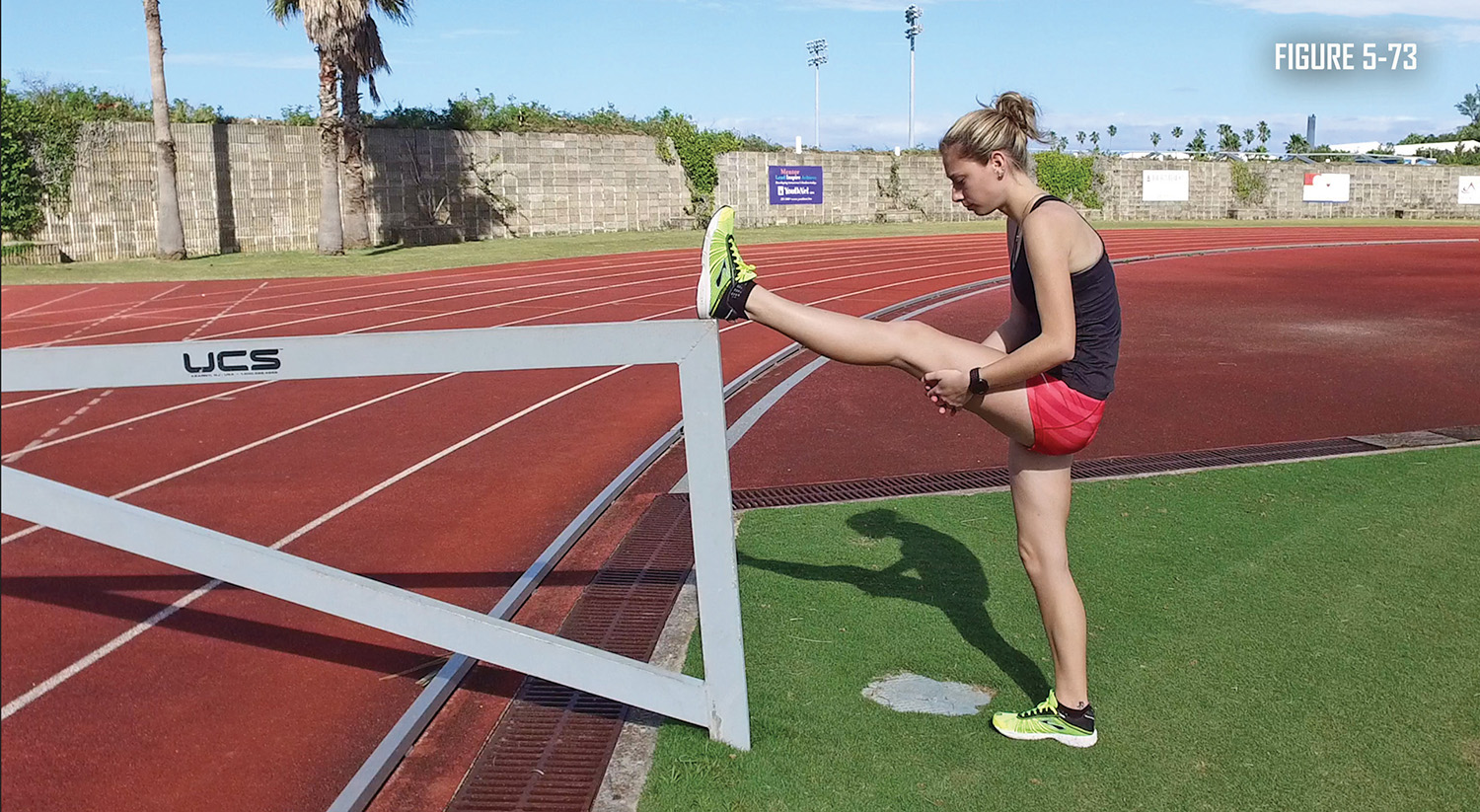
Next Lesson: Correcting Excessive Loss of Contact Race Walking